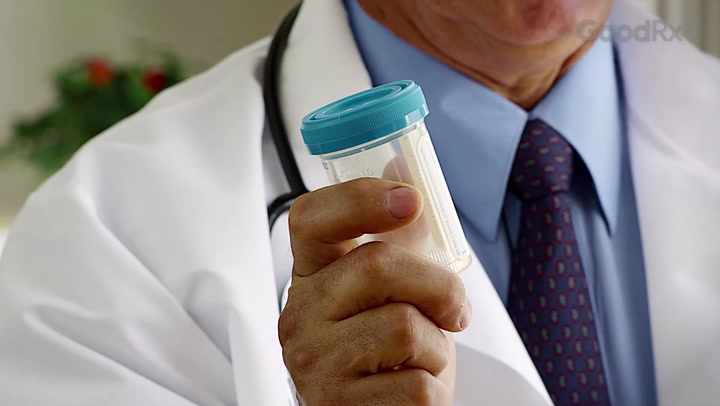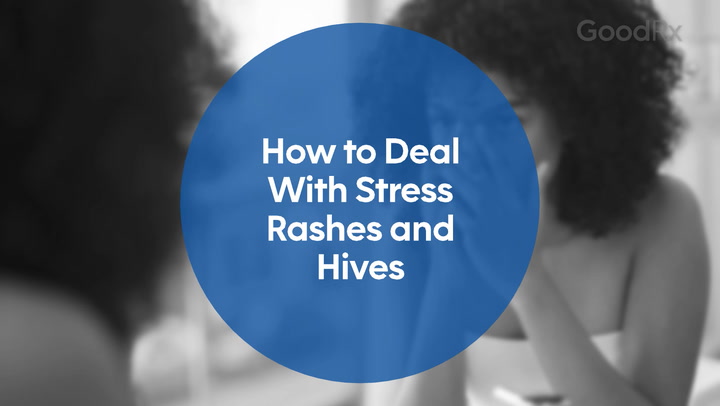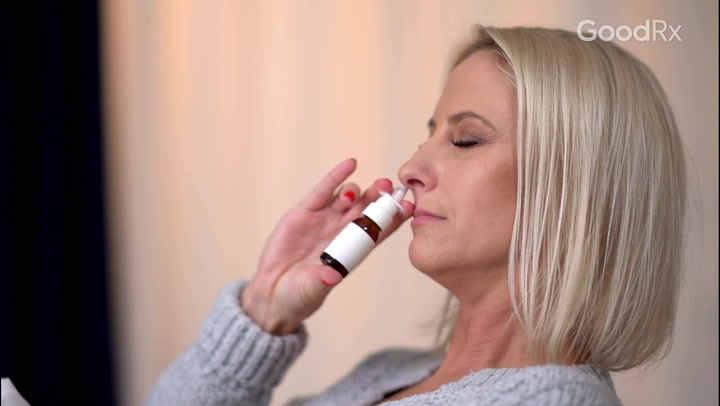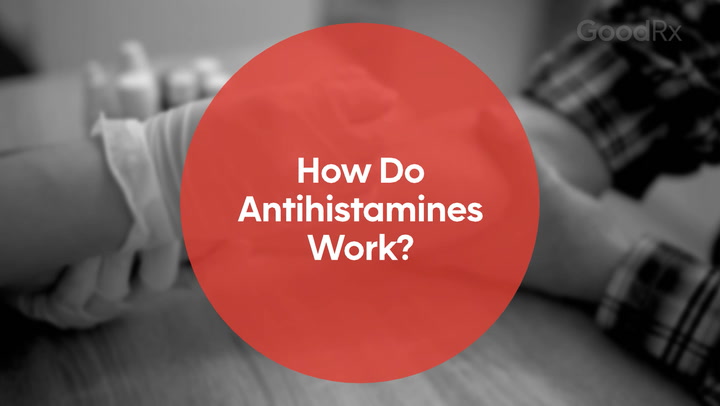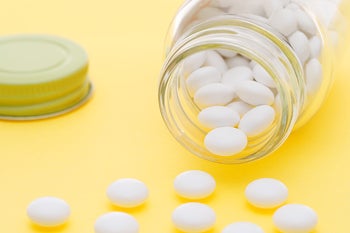
Can You Drink Alcohol With Allergy Medications like Benadryl, Claritin, or Zyrtec?
Key takeaways:
Antihistamines can treat seasonal and year-round allergies. But combining them with alcohol can be risky.
Benadryl (diphenhydramine) is especially dangerous to combine with alcohol. That’s because it can cause drowsiness and impaired thinking, which can be worse with alcohol. It’s best to avoid this combination.
Claritin (loratadine) and Zyrtec (cetirizine) typically cause less drowsiness than Benadryl. But you may still experience drowsiness or dizziness if you take them with alcohol.
Table of contents

If you have seasonal allergies, you may reach for over-the-counter (OTC) allergy medications to keep your symptoms at bay. For many people, this includes antihistamines. Benadryl (diphenhydramine), Claritin (loratadine), and Zyrtec (cetirizine) are a few examples of antihistamines you may have on hand.
But what happens when you mix antihistamines with alcohol — is it safe? The short answer: Not really.
Let’s discuss what you should know before taking allergy medications such as Benadryl with alcohol.
Search and compare options
What are the dangers of mixing alcohol and antihistamines such as Benadryl?
Alcohol can slow down your central nervous system (CNS), which is made up of your brain and spinal cord. This can make you feel drowsy, impair your coordination, and slow down your breathing. When combined with allergy medications like antihistamines, these effects can worsen.
But not all antihistamines are created equally. For example, there are differences between older antihistamines, such as Benadryl, and newer antihistamines, such as Claritin and Zyrtec.
Benadryl and alcohol
Benadryl’s main ingredient is diphenhydramine — an older, first-generation antihistamine. First-generation antihistamines can cause side effects such as drowsiness, confusion, and impaired thinking. That’s because they’re much more likely to reach the brain and affect your CNS.
Because of these effects, combining Benadryl and alcohol is particularly risky. In some cases, you could experience serious problems like confusion, enhanced drowsiness, and dizziness. And you may be more sensitive to these effects if you’re 65 or older.
Given the risks, it’s best to avoid this combination.
Keep in mind: Diphenhydramine is also found in many OTC products beyond allergy medications. OTC sleep aids, motion sickness pills, and cold and flu products are a few examples. So, it’s a good idea to check the ingredient list on the OTC label if you’re concerned about interactions with alcohol.
Claritin and alcohol
Claritin’s main ingredient is loratadine — a newer, second-generation antihistamine. Medications in this category tend to cause fewer side effects than first-generation antihistamines. That’s because they don’t affect the CNS as much.
Even so, some drowsiness and dizziness are still possible with Claritin. And these effects may be worse if it’s combined with alcohol.
Other notable interactions: Read more about other Benadryl (diphenhydramine) interactions — from sleeping pills to antidepressants — and how to manage them.
Comparing options: Pharmacists discuss some of the most common antihistamines and what sets them apart from one another.
Medications not to mix with alcohol: There are many medications that interact with alcohol, some of which can have life-threatening consequences if combined.
In general, it’s best to avoid or limit alcohol if you’re taking Claritin. Your healthcare professional can tell you how much alcohol may be safe in your specific situation.
Zyrtec and alcohol
Zyrtec’s main ingredient is cetirizine, another second-generation antihistamine.
While it’s considered to be non-drowsy, Zyrtec may cause more drowsiness than Claritin. Like the situations above, combining it with alcohol can make you drowsier. Avoid or limit alcohol with this combination. Your healthcare professional can tell you more about the best approach to take.
Read more like this
Explore these related articles, suggested for readers like you.
Is having 1 or 2 drinks OK?
It’s difficult to know how 1 or 2 drinks might interact with your allergy medication. Everyone reacts differently to antihistamines. Some people might feel extremely drowsy from one Benadryl or Zyrtec dose. But someone else might not feel that way at all. And the same holds true for alcohol.
It’s best to avoid alcohol until you know how your allergy medication affects you. If you do decide to have a drink or two, avoid driving or other activities that require coordination or alertness. It’s also best to make sure there’s someone with you in case you have a negative reaction.
Are certain people more at risk when combining alcohol and allergy medications?
Alcohol affects everyone differently. But certain people may be more susceptible to its effects.
Older adults tend to have a lower alcohol tolerance than younger people. Combining any medication with alcohol can raise the risk of serious side effects for this age group. And this is especially the case with first-generation antihistamines like Benadryl. In fact, Benadryl is typically avoided in older adults altogether.
Women tend to feel the effects of alcohol more than men. Sedation and confusion may be more likely for women who mix alcohol with antihistamines.
Are there any serious side effects or risks?
Most people don’t experience serious side effects when taking antihistamines by themselves. These medications have been used by the public for decades and are available OTC. They’re typically safe to use if you follow the instructions on the label.
But there have also been reports of people taking too much Benadryl. This has led to side effects like hallucinations, seizures, and trouble breathing. These effects can be worsened by alcohol.
Benadryl can also worsen some serious medical conditions, especially if combined with alcohol. Examples include glaucoma, chronic obstructive pulmonary disease (COPD), and an enlarged prostate.
When should you get medical attention?
Get immediate medical help if you have any of the following symptoms after taking an antihistamine with alcohol:
Confusion
Feeling disconnected from reality
Extreme drowsiness
Seizures
Trouble breathing
When can you start drinking alcohol after taking Benadryl, Claritin, or Zyrtec?
It’s best to wait to drink alcohol until an allergy medication has fully left your system. Benadryl, Claritin, and Zyrtec are likely cleared from your body about 2 days after your last dose. But Claritin and Zyrtec may have residual effects for 1 to 4 days after stopping daily use.
Keep in mind that everyone’s body breaks down medications differently. And there are personal risks that should be considered, too. So, you should talk to a healthcare professional about when it’s safe to have a drink.
Are there any allergy medications that aren’t affected by alcohol?
Depending on your allergy symptoms, you can consider a couple of alternatives to oral antihistamines. Alcohol may be less of a problem with these options since your body doesn’t absorb them the same way as oral medications.
These medications include:
Steroid nasal sprays: A steroid nasal spray may help with a stuffy nose. Options such as Flonase Allergy Relief (fluticasone) or Nasonex (mometasone) work well for nasal allergy symptoms. Most are available OTC.
Antihistamine nasal sprays: These nasal sprays help with sneezing and a runny or itchy nose. Examples include OTC Astepro (azelastine) and prescription Patanase (olopatadine).
Decongestant nasal sprays: Sprays such as Afrin (oxymetazoline) can help with a stuffy nose. But you should only use them for up to 3 days in a row. Otherwise, they can worsen congestion.
Eye drops: Antihistamine eye drops like Zaditor (ketotifen) or Pataday (olopatadine) are also used to help with itchy or watery eyes due to allergies. They’re both available OTC.
For seasonal allergies, it’s best to try to stay indoors as much as possible when the pollen or mold count is high. It’s also a good idea to wash your hands and face after spending time outdoors.
Frequently asked questions
You should wait at least 6 hours after your last drink to take Benadryl. It takes your body about that long to clear alcohol from your bloodstream. But the more you drink, the longer it will take for your body to clear it. You should check with a healthcare professional about how long you personally should wait to take Benadryl after drinking.
Benadryl has several interactions. You should avoid mixing Benadryl with alcohol, opioid pain medications, and benzodiazepines. You should also avoid taking it with sleeping medications and other medications that cause drowsiness. Taking Benadryl with any of these raises the risk of excessive drowsiness. Share your medication list with your healthcare team so they can help you avoid or manage other Benadryl interactions.
Benadryl isn’t used to directly treat alcohol withdrawal. But sleeping difficulties are a common symptom that people experience during alcohol withdrawal. Benadryl may be recommended as a sleep medication to help with this symptom.
The bottom line
You shouldn’t drink alcohol if you’re taking Benadryl (diphenhydramine), Claritin (loratadine), or Zyrtec (cetirizine). Drinking while taking antihistamines can raise your risk of drowsiness or dizziness. Benadryl’s risks with alcohol are much greater than Claritin’s or Zyrtec’s. But it’s not recommended to drink with any oral antihistamine. Your healthcare team can provide more information on your personal risks when it comes to this interaction.
Why trust our experts?



If you or someone you know struggles with substance use, help is available. Call SAMHSA’s National Helpline at 1-800-662-4357 to learn about resources in your area.
References
American Academy of Allergy, Asthma, and Immunology. (n.d.). National Allergy Bureau.
American College of Allergy, Asthma, and Immunology. (2020). Hay fever.
Church, M. K., et al. (2013). Pharmacology of antihistamines. Indian Journal of Dermatology.
Huynh, D. A., et al. (2023). Diphenhydramine toxicity. StatPearls.
Kenvue Brands (2025). Benadryl - diphenhydramine hydrochloride tablet, film coated [package insert]. DailyMed.
National Institute on Alcohol Abuse and Alcoholism. (2014). Harmful interactions.
National Institute on Alcohol Abuse and Alcoholism. (2024). Aging and alcohol.
Simon, F. E. R., et al. (2008). H1 antihistamines: Current status and future directions. World Allergy Organization Journal.
U.S. Food and Drug Administration. (2020). FDA warns about serious problems with high doses of the allergy medicine diphenhydramine (Benadryl).








